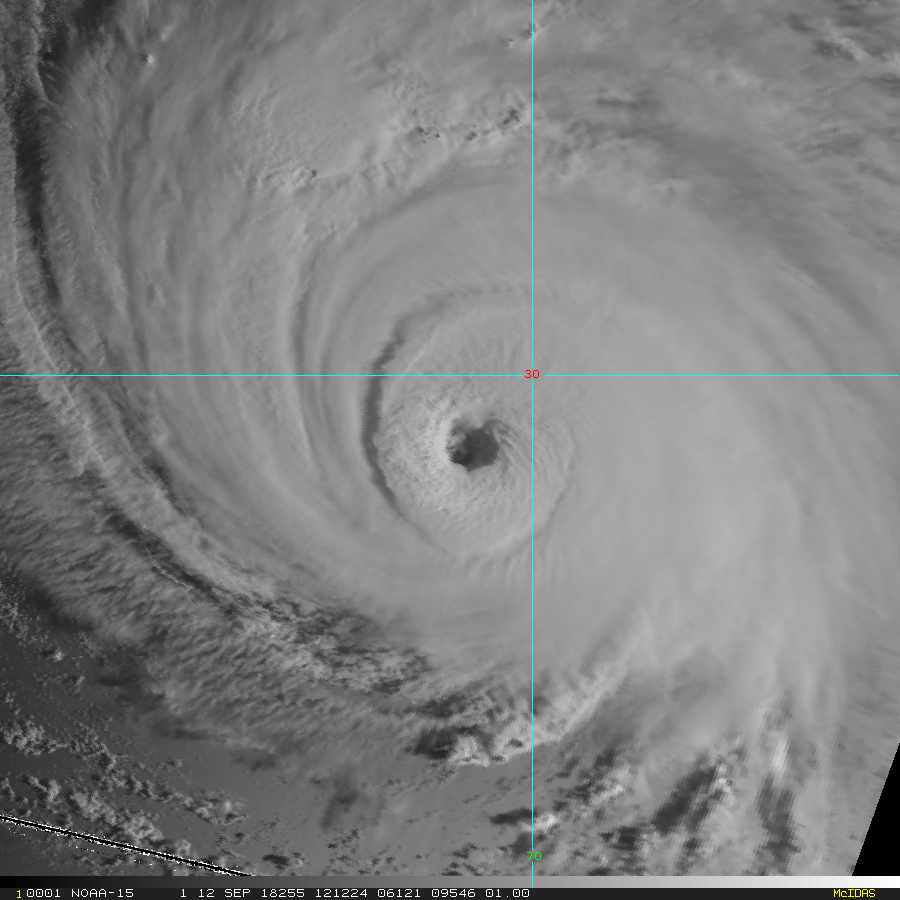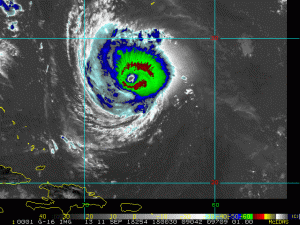Florence Upgraded to 150mph: Is it Justified?

On May 3, 2019, the National Hurricane Center (NHC) released the final tropical cyclone report of 2018 and latest TCR release in their history. The report has sparked some controversy over the fact that it officially upgraded Hurricane Florence’s maximum wind speed from 120 kt (140 mph) to 130 kt (150 mph). But is this controversy justified?
To answer this question, we first have to look at the NHC’s reasoning for the upgrade. According to the TCR, “Florence’s estimated peak intensity of 130 kt at 1800 UTC 11 September is based on peak reconnaissance aircraft 700-mb flight-level winds of 143 kt and 141 kt, which equate to an intensity of 127 kt 129 kt at the surface. While these peak flight-level winds occurred at 1223 UTC, Florence had just completed an ERC around 1100 UTC that day. Based on passive microwave imagery that showed the eyewall contracting and an increase in organization in geostationary satellite imagery during the next few hours, it is estimated that Florence’s peak intensity occurred about 6 h after the peak flight-level winds were measured. The highest wind speed measured by a dropwindsonde released in Florence’s eyewall 160 kt at the 909-mb level at 2101 UTC 10 September, about 3 h after the hurricane had completed its second RI phase.”
So, surface measurements definitely seem convincing. But what about satellite appearance? Did it corroborate the surface measurements?

So far, I haven’t been able to find a better image of the storm. So, the time of peak is quite well corroborated, but is the peak intensity supported as well as the time? The structure appears to be healthy with a mostly circular and solidified eyewall, a well-defined eye, and cloud tops reaching as cold as -70C. However, because those cloud tops aren’t well organized and don’t wrap all the way around the eye, and because the eyewall is less defined to the south and west, I’d say 130 kt is about the most this image would support. So imagery just barely supports the NHC’s intensity.
So, what conclusions can we draw from this? Well, it certainly wasn’t a Patricia situation where there was no obvious evidence to support the NHC’s claim, it wasn’t a Maria situation where there was pretty much no dispute, nor was it a Wilma situation where it was pretty much anyone’s guess. I’d personally say that given the decent measurement and the infrared imagery support, the NHC most likely did a good job with their estimate. Of course, this is my opinion and everyone is entitled to theirs. I’m also not saying I would be angry and cause controversy if the NHC put it at 125 kt (145 mph). In fact, I’d be fine with that too, but I personally do not believe all of the controversy is completely justified.
